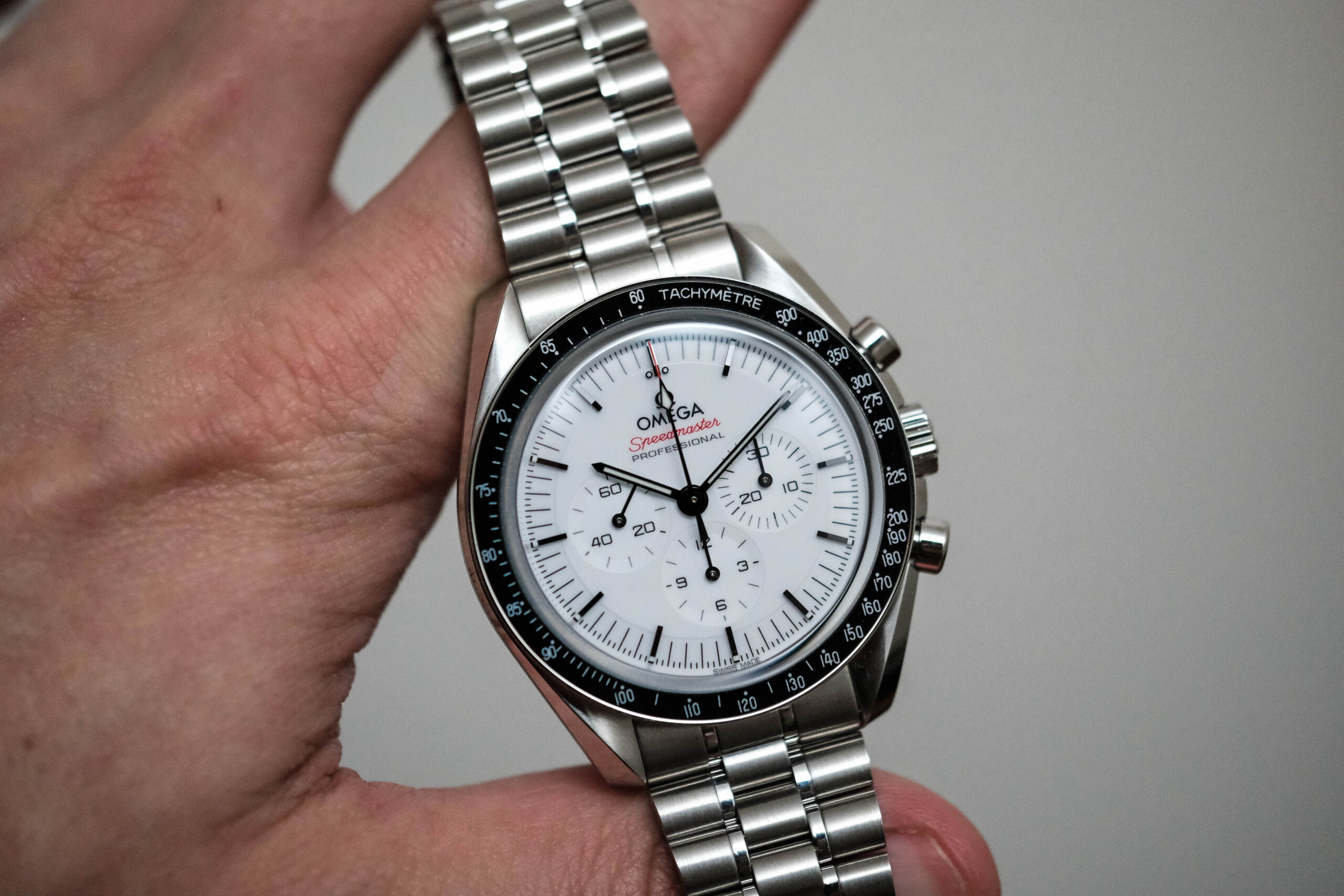
The Omega Speedmaster Professional Moonwatch needs no introduction, it’s been the enthusiasts chronograph of choice for decades. When its competitor, the Rolex Cosmograph Daytona, first launched back in 1963 it flopped, but when the Speedmaster launched and became Nasa’s watch of choice to wear to the moon it flourished.
The Moonwatch has been worn by big names such as Buzz Aldrin during the Apollo 11 mission in 1969, he famously wore the reference ST105.012 on the moon. The Moonwatch has also been fastened to the wrists of icons such as Ed White, Tom Hanks, and George Clooney, with each one of them wearing a different reference of the venerable watch – but each one of them had one aspect in common, and that was a black dial. It wasn’t until March 2024 that Omega finally gave in and launched a full production stainless steel white dial Speedmaster Moonwatch with a lacquered layered dial, which is the watch we have on hand here.
Intricate Dial Swap
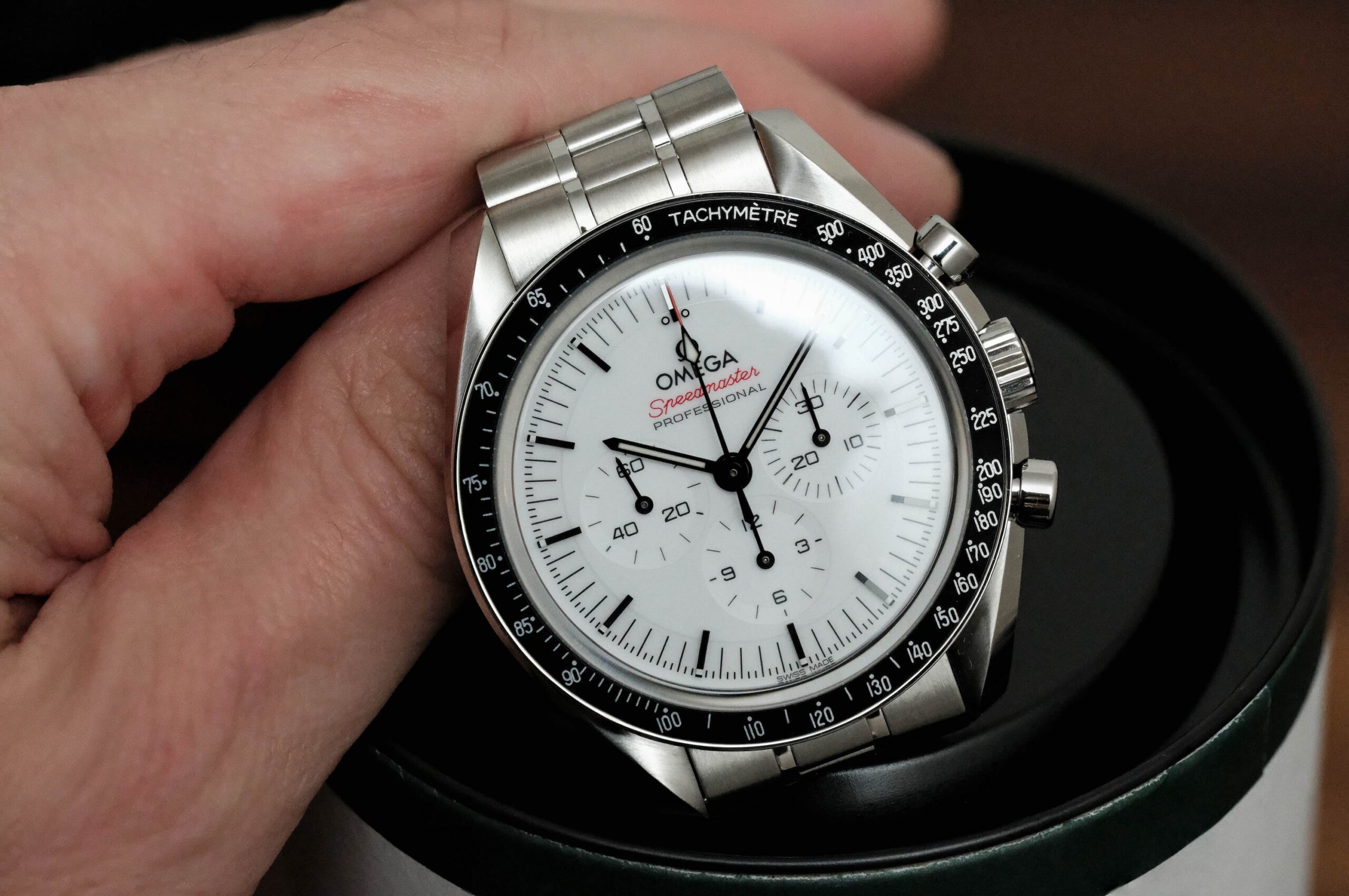
Technically, this new white dial variant is indeed a simple dial swap from the iconic black dial version – but digging a little deeper reveals a more nuanced approach from the designers and watchmakers at Omega. The white dial is not simply an “inverted” version of the its black counterpart, there have been small but very meaningful adjustments. For one, the new white dial has a glossy lacquered finish, whereas the black dial has alway been matte or very finely grained in finish. The “Speedmaster” text is now bright red, mimicking the look of the Daytona, instead of the tried and true white text on the black version.
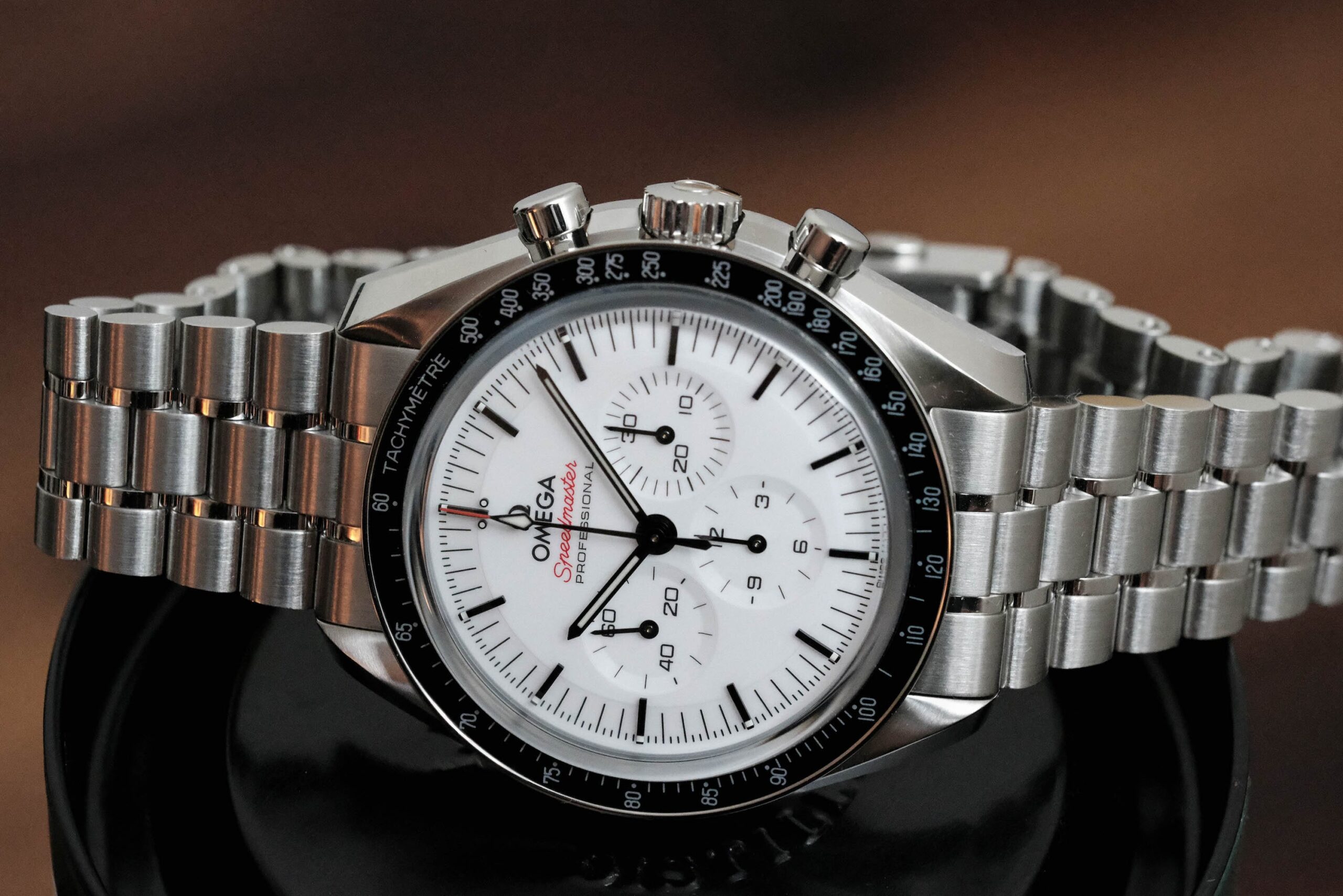
We’re now also looking at a stepped dial, with applied indices, and PVD black diamond-polished hands. A series of minor changes, that combined, bring us a striking new look to the Moonwatch never seen before. This is, in my opinion, a Moonwatch that is leaving the station (or should we say launch pad?) as a historical tool watch, and entering into a flashier more luxury oriented tier of watches – or just perhaps offering this more premium look to collectors who prefer it. Another indication of this is Omega’s choice to only offer the white dial with a sapphire crystal, unlike the black version which is also offered with a Hesalite crystal, which allows the watch to remain closer to its roots as a nostalgic heritage reissue watch.
Appearance and Feel on Wrist
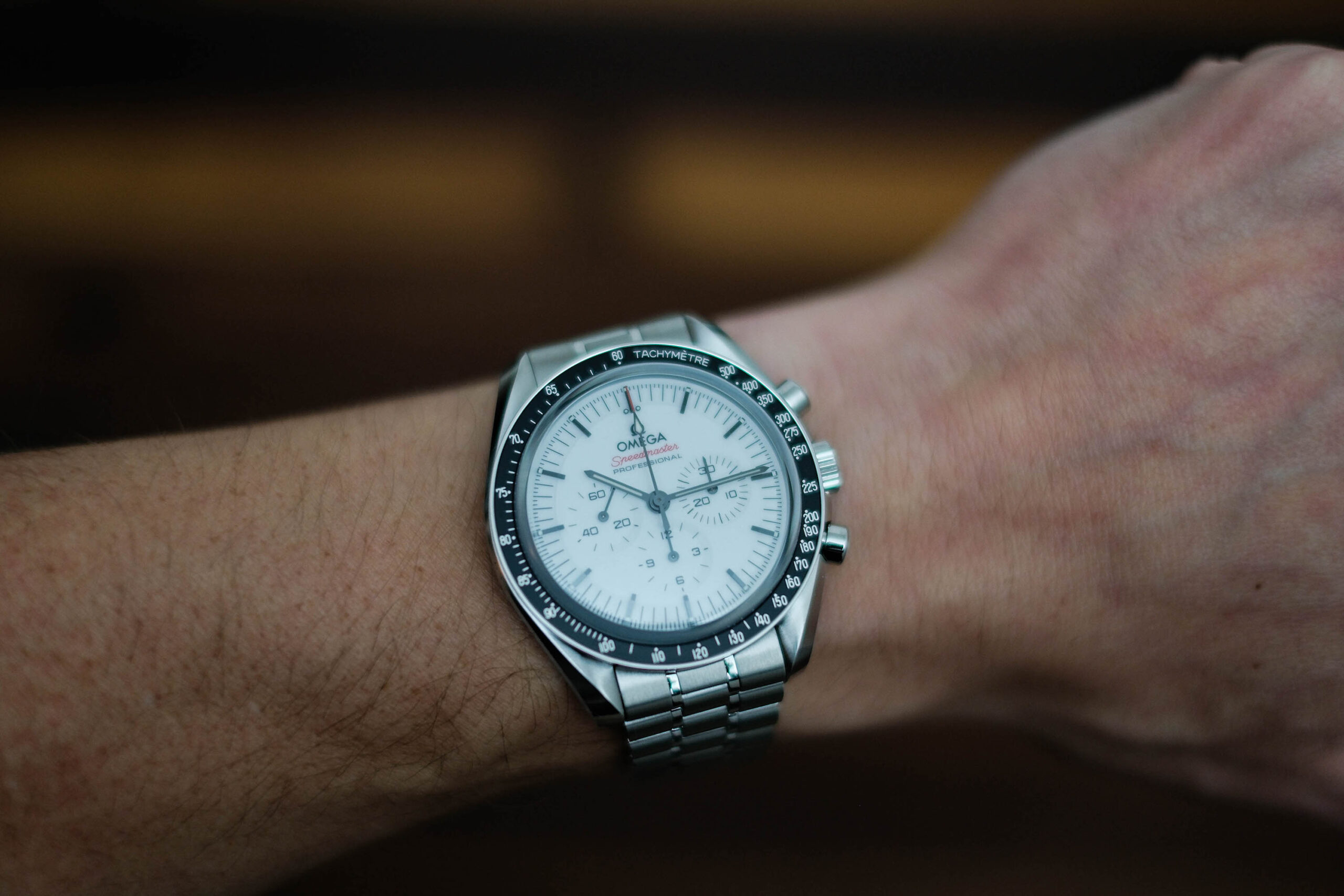
I’ve been lucky enough in the past to dabble with the original black dial Speedmaster Moonwatch, and as expected, there isn’t too much to nitpick about its fit on wrist. This is a watch that has gone through multi-year refinements, and the first iterations were already near perfection. Even on my small 6.5 inch wrist I have zero complaints.
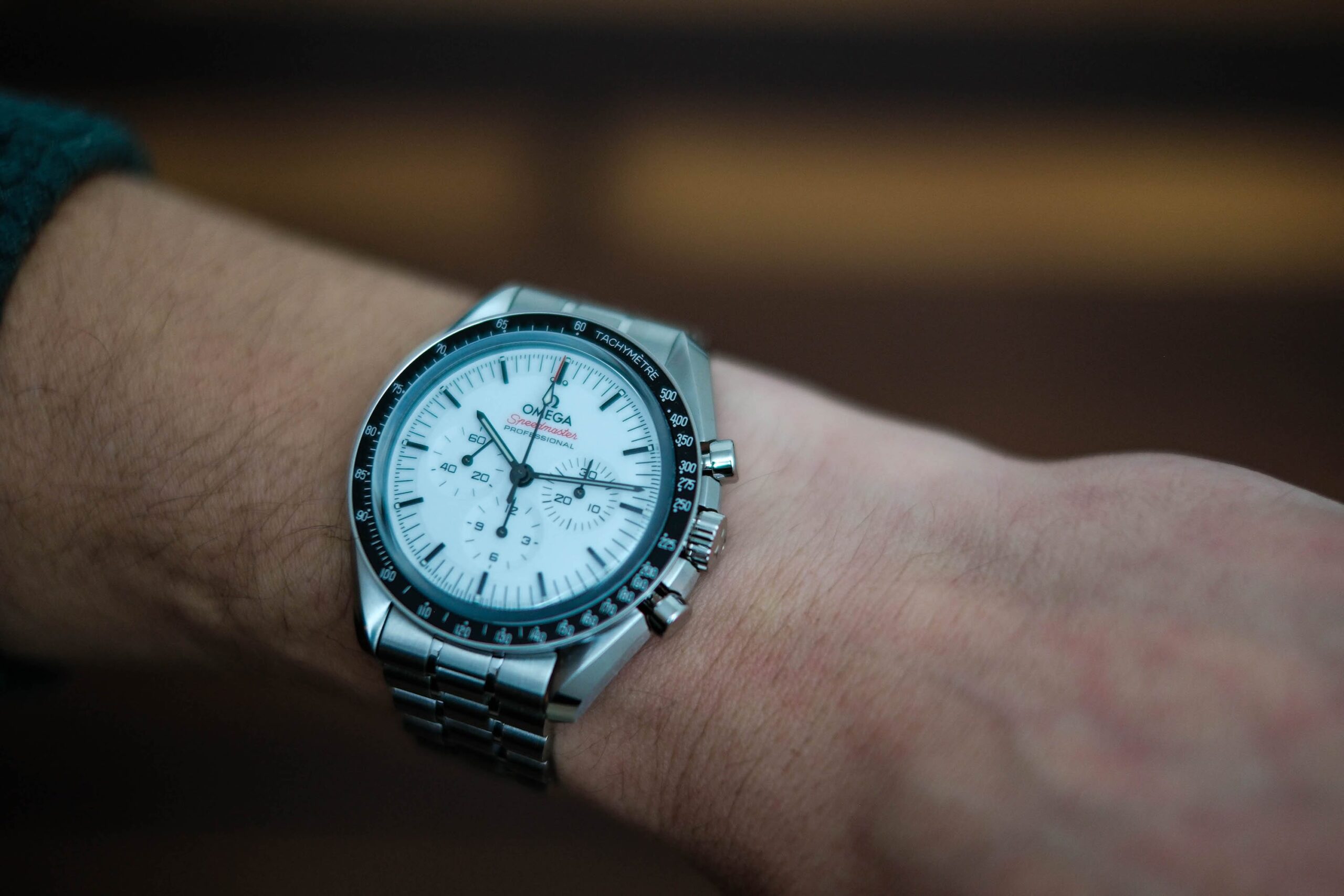
The watch hugs my wrist like the stainless steel was heat molded to it. The profile view of the watch reveals the aggressive curvature of the lugs, they land right at the edge of my wrist so as to not protrude or appear bulky. The side view of the case is also quite slim for a chronograph thanks to the beyond legendary manual wind in-house calibre 3861. The bracelet is impressively malleable, more so than a Rolex Oyster bracelet, but pretty much on-par with a Jubilee bracelet. This allows the watch some wriggle room in terms of fit on a wide spectrum of wrist sizes – small wrists are no problem as the tiny links allow the bracelet to contour easier without appearing to have “flat sides”, and the bracelet simply bands outwards with grace on larger wrists.
Even though the white dial variant we have here today is not offered with a Hesalite crystal, not all retro appeal is lost. The current sapphire crystal is double domed, allowing it to protrude upwards from the bezel by what looks like 1mm. In this case, you’re getting the best of both worlds with a crystal that retains the excellent anti-scratch properties that sapphire is known for, but also a visual appeal still geared towards the heritage of the Moonwatch.
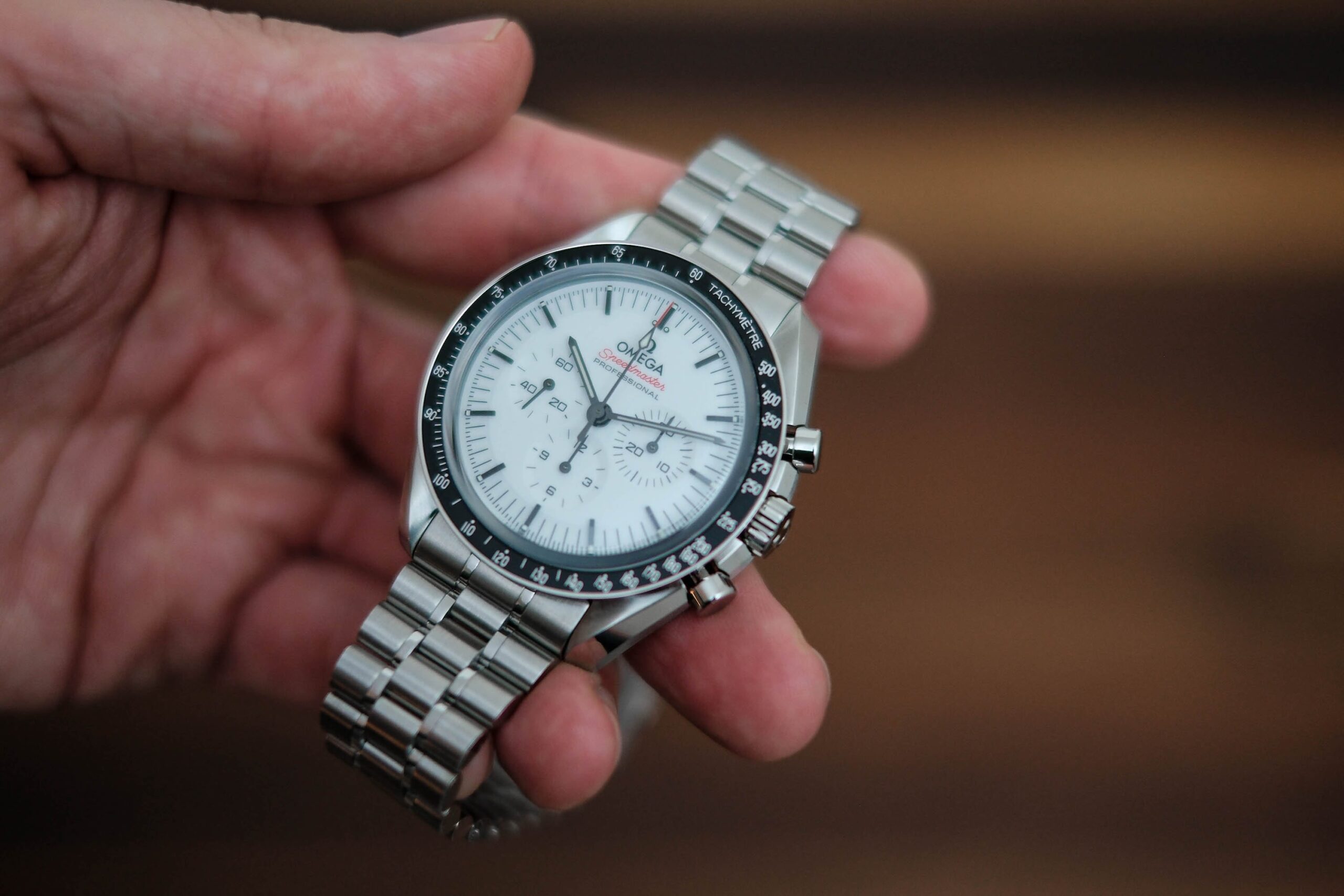
The weight of the watch is pretty much as expected on wrist. It’s not a lightweight watch with its steel construction and mechanical movement, but it’s just fine for daily wear comfort. It does strike me a slightly more delicate watch than say any watch from Rolex, it’s just slightly less “tank like” and leans more towards high horololgy. The Speedmaster Moonwatch still remains dated in terms of its functional specs, but that’s the allure of the watch. Whereas some other brands have moved forward, modernizing their offerings to better suit todays wearers.
Calibre 3861 Movement
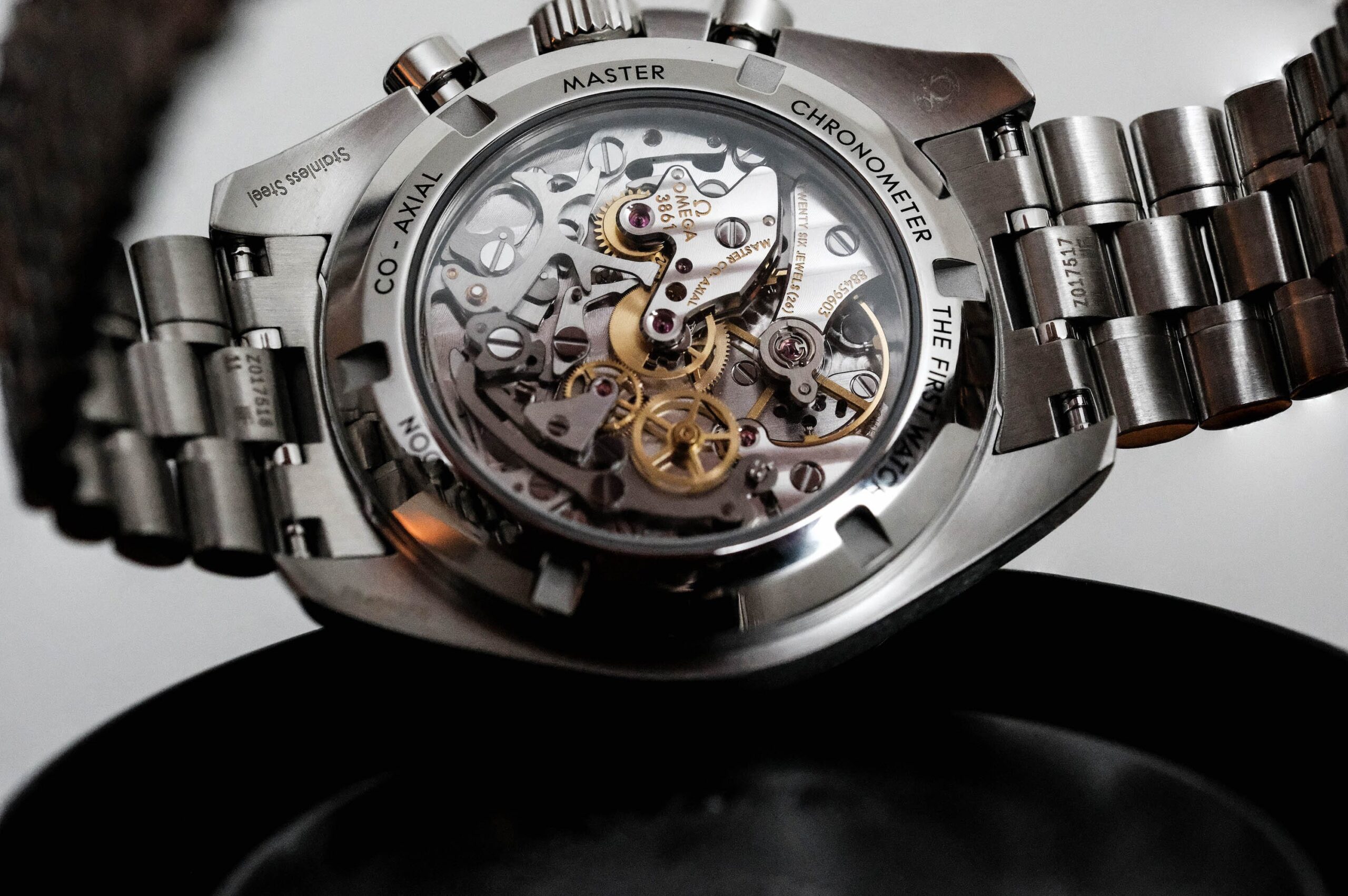
I’ll just touch briefly on the movement, as it remains the same calibre 3861 from the black dial version. On the white dial here, the movement is visible through a sapphire exhibition back, again staying in line with its more premium edge when compared to the black dial in Hesalite. One of the main attractions of this watch is its movement, and its evolution from the very first reference CK2915 until now in the ref. 310.30.42.50.04.001.
The current calibre 3861 is essentially the same skeleton as the calibre 1861 which was used on the generation prior. The 3861 mainly introduces an improvement and modernization of its materials, the architecture and function remains the same. It’s also now Master Chronometere Certifed. This current calibre also now makes use of a silicon hairspring, and prettier finishing, such as the widening and more precise machining of bevels and upgraded countersinks around jewels and screws. It would be sacrilege to cover this movement up with a solid caseback, it’s been an absolute joy to observe in action while off the wrist.
To the Moon and Beyond
The Speedmaster Moonwatch will always be at the top echelon of heritage driven tool watches, and it sits at the top of the chronograph category as a must have in any serious watch collection. The white dial variant is simply an attempt to modernize the line for Omega, and to add something fresh to what is their most popular watch ever made. This is a change that’s long been desired by the watch enthusiast community, whom have harped for some more variation in the Moonwatch lineup.
As more of a Rolex collector myself, I can appreciate what Omega has done here, but I still see myself leaning towards the iconic black dial should my time come to acquire one of these illustrious gems.
Leave a Reply